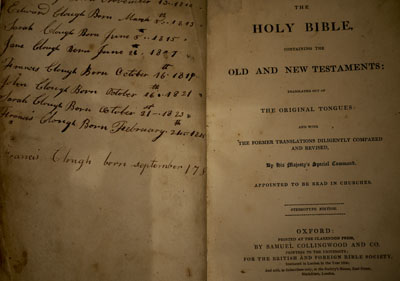What You Need to Know:
• Prior to 1540, only testaments (dispositions of property) were written, as opposed to wills (divisions of property). The law at the time already predetermined the division of an estate (to the oldest son) and thus wills were not required prior to 1540.
• Even after 1540, only wealthy people with property (typically land) made wills.
• Boys as young as 14 years old and girls as young as 12 years old could (and did) make wills. Wealthy families in particular often made sure wills were made at an early age to protect against the possibility of an early death. Therefore, when reading a very old English will, do not assume the will was written at a time when the person was a mature adult in the later stages of their life.
• The location of where the will was filed depended on the size of the estate. Larger estates that bridged more than one parish would be moved to a higher church court. The ordering of the Anglican ecclesiastical units (from smallest to largest) was parish, peculiar (peculiar court), rural deanery (rural Dean’s court), archdeaconry (Archdeacon’s court), diocese (Bishop’s court) and province.
What You Need to Know:
• The Bishop’s Transcripts were hand-copied from the original registers. The transcribers often had to interpret the sometimes sloppy and incomplete handwriting of the parish priest who filled in the original register. As a result, the details in the Bishop’s Transcripts can vary from the original register, sometimes significantly. If the original register still exists, it is usually worth the effort to try to track it down so that the original source can be consulted.
• Most of the transcribed parish records available on the internet actually come from the Bishop’s Transcripts. The telltale sign is evident when looking at a scan of a register page. If the handwriting for several records on one page is uniform in both slope and style, then most likely all the records on the page were written at the same time by the same person and thus it is a Bishop’s Transcript.
• Parish priests and clerks could be just as forgetful, lazy and incompetent as anyone else. It did not help that most people were illiterate at the time and could not properly read or write. Thus, there were hardly any checks on parish records for accuracy or completeness. As a result, some entries are often sparse, illegible or masked by large ink blots. It is not uncommon to find entries that just list the date and nature of the event (and most likely entered by the parish priest well after the fact).
English Genealogy in the 1600s
What You Need to Know:
• James I introduced a new translation of the bible to England at this time. This version of the bible eventually became known as the King James Bible. It was widely adopted by the Anglican church and various Protestant faiths.
• The King James Bible was for many years the only book owned by most English households. As the only book in the house (and presumably one that was consulted regularly), the blank front and back pages of the King James Bible served as many family’s unofficial log for recording births, marriages and deaths. It is always worthwhile trying to find out if anyone has the family bible to see if any recording were made on the blank pages or the margins (as shown in the example below).

• In England, family bibles were traditionally handed down to the eldest daughter. That means the surname written in the bible would change with every generation. It can also provide an important clue as to the origin of the names in the bible.
• 1611 was also the year the English crown began the plantation of English and Scottish Protestants into Ireland, primarily around Ulster.

